As per Houzz’s 2019 Home Renovation Trends Study, kitchens were among the most renovated rooms in homes countrywide. Since kitchens are one of the high-traffic areas around the house, having a great kitchen floor is undoubtedly vital to functionality and aesthetics within your kitchen space. Food stains, spills, heat, and the constant plodding of feet are common in kitchens, necessitating excellent kitchen flooring options that can handle the wear and tear while being a major design statement.
What to Consider When Choosing Your Kitchen’s Floor

Settling on a kitchen flooring type can be challenging, given the many options available to modern-day homeowners. However, a few guiding principles along with a great floor fitter could help you make the right choice based on your unique needs. Some of these are:
- Lifestyle – Experts advise that you choose flooring options that cater to the specific wear and tear your kitchen is likely to encounter, considering your cooking patterns, other home residents, etc. Non-slip options may be essential for people with kids and pets to ensure safety.
- Ease of cleaning– Spills, stains, and tracked-in dirt are a few culprits that rob your kitchen floors of being pristine always. Therefore, picking an easy-to-clean option is vital for convenience. Also, water-resistant materials that aren’t easily stained will minimize the overall time spent on maintenance.
- Sense of Style– Your tastes will also undoubtedly influence your choices. Experts advise choosing floors that complement your kitchen, factoring in kitchen size, existing colours, textures, patterns, etc.
- Comfort– Comfort is another vital consideration when choosing flooring options, especially if you spend hours on your feet cooking. For example, tile floors are uncomfortable to stand on for long periods, and you may be better off with wood and other resilient options that are more comfortable.
- Cost– Cost will also affect your choice, primarily if flooring constitutes an aspect of your general remodelling budget. This budget will generally influence whether you select expensive or more cost-effective flooring options.
The Different Types of Floors
Thankfully, various options are available to choose from, each presenting its perks and drawbacks that homeowners should assess thoroughly before deciding. Popular flooring options include:
- Timber

Timber is an exquisite hardwood flooring choice that does an excellent job of marrying aesthetics with functionality, making it a strong option worth considering. Timber has excellent aesthetic appeal, lending your kitchen space a classically beautiful and rustic look and feel. Concerning functionality, timber is a more advantageous option than several other floors for the following reasons:
- Well-sealed timber floors allow spilt fluids to bead up rather than absorbing them, so it is easier to wipe off liquids from timber floors. Also, breakable items that you accidentally drop have a better chance of surviving timber floors, as hardwood floors are generally softer than tile and others.
- Timber flooring is robust and resilient, easily lasting a lifetime if maintained properly. Due to its natural characteristics, timber ages more gracefully than vinyl and tile. Also, dents and scratches that appear in timber floors blend into the hardwood pattern seamlessly, enhancing its texture and rustic look.
- Timber is the only genuinely renewable building material around nowadays. Consequently, it is an excellent option for sustainability reasons, as it is environmentally friendlier than synthetic alternatives. Sustainably sourced and certified timber is renewable, energy-efficient, and contributes its quota to climate change since about 50% of its dry weight is carbon.
However, timber is temperature-sensitive, has a higher maintenance cost, is noisy to walk on, and is prone to termite attacks.
- Tile Flooring

Tile flooring is another excellent option to consider for your kitchen flooring needs. Tiles are versatile, coming in different varieties, styles, and variations like natural stone, ceramic, granite, and marble, presenting homeowners with many options. Tiles are great for flooring because they are:
- Best for underfloor heating – Many experts agree that stone and tile are the best flooring types to use with underfloor heating, as they have high thermal conductivity and retain heat better.
- Easy to maintain – Tiles are also easy to maintain and are non-absorbent, allowing you to mop away any spills and stains readily, ensuring that your kitchen is always spick and span.
- Highly durable – A quality installation can last for several years. The few tiles that may crack due to severe impact can also be replaced quickly.
- Cost-Effective- Tile flooring is typically cheaper than hardwood flooring but more expensive than carpet, making it a go-to option for many homeowners.
A few of tiles’ cons are that it becomes colder during winter, is unbearable to stand on for long, and can be slippery without rugs around.
- Vinyl

Vinyl is a synthetic flooring material composed of several layers of various materials fused to form a practical, durable, and affordable floor covering. Additionally, vinyl flooring offers multiple colours and styles in either sheet or tiles. Vinyl is a suitable floor type for the kitchen due to:
- Durability- Vinyl is highly durable, easily lasting 10-20 years with excellent maintenance.
- Water and stain resistance- Highly active kitchens with lots of leaks, spills, and stains will appreciate vinyl’s water and stain-resistant properties.
- Easy to clean – Whether through vacuuming or mopping, vinyl is easy to maintain.
- Affordability- It is one of the most inexpensive flooring options on the market.
However, vinyl flooring isn’t damage-resistant and is less environmentally friendly because it is synthetic.
- Laminate

Laminate is an affordable hardwood alternative made of resin and fibreboard layers. It often comes in various styles that mimic ceramic or wood. Laminate flooring gives your kitchen natural aesthetics at a lower cost. Some other benefits of laminate include.:
-
- Requires minimal maintenance and can be installed with underfloor heating.
- Laminate is durable, perfect for areas like the kitchen, which experience significant foot traffic.
- Laminate flooring generally has fewer defects than other flooring types, as manufacturers prioritize consistent colour and patterns during production.
It is important to note that you can’t refinish laminate floors; once they wear out, you would have to replace them. Also, laminate isn’t typically eco-friendly.
Colour/Pattern Considerations

Flooring colours and patterns significantly affect your kitchen’s atmosphere and look. Interior designers recommend that you pay attention to how your colour choice may affect your kitchen space. Lighter colours may make your kitchen look more spacious while creating a warmer atmosphere. Darker colour choices would make your kitchen smaller while providing an air of luxury and uniqueness. Lighting, kitchen size, and cabinet colour and style should influence your floor choices.
Flooring patterns are also essential to your kitchen’s look. Contemporary laminate flooring can make your space more modern, while oak-style flooring is best for an old-fashioned and classic look.
In conclusion, there are different types of flooring options that you can select from to create the perfect kitchen look. The above-listed options are great options whose pros and cons homeowners should consider before choosing.

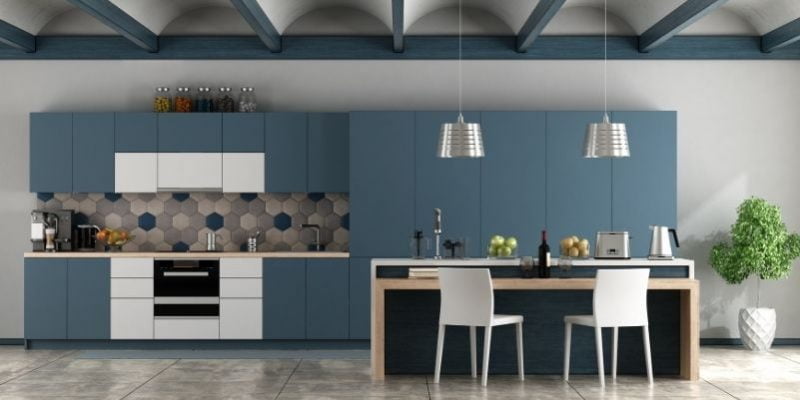


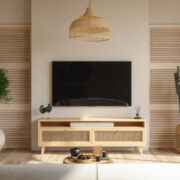



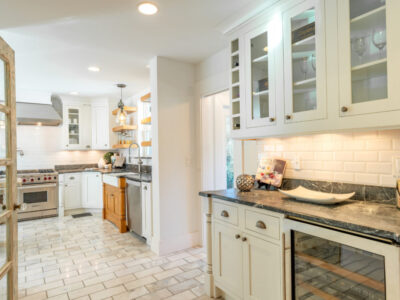
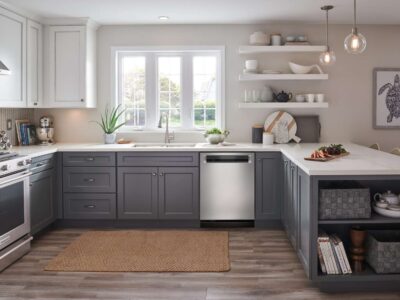


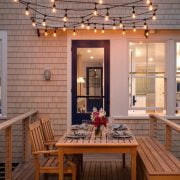

Comments